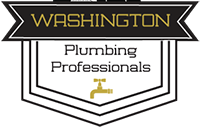What Is PEX?
Cross-linked polyethylene, commonly referred to as PEX, has been taking over the market for about 20 years. There are a few types of PEX and a few different methods used to connect them.
Type A PEX is an expandable pipe that is manufactured in a way that the interwoven fibers of the pipe want to return to their original size. Once expanded, the required fitting is inserted into the pipe and held in place for a few seconds while the pipe tries to contract back to its original size around the fitting. Once the pipe can no longer contract, a water tight seal is created. Another great advantage of type A PEX is the fittings are able to rotate inside of the pipe causing no damage to the piping and no leaks. Type A PEX is also much more flexible than other types, and is able to “swoop” around moderate bends without the use of additional fittings. Not only does this save money and time, but it also creates less drag and better flow for the water in your pipes. There are a few different markings on type A PEX your plumber may use, such as color coded red (hot lines) and clear/blue (cold lines). Some piping may even have a red or blue line on clear piping. All of these markings are still indicators to the plumber working on your house that it is expandable.
Commonly found at your local hardware store, type B PEX is more rigid than its competitors. Fittings are attached to the pipe by compressing a copper or stainless steel ring around the pipe and fitting. Having your plumber install this type of PEX may lessen the overall cost of the installation depending on material pricing at the time. Type B PEX has a smaller inner diameter than its competitors. This in addition to the fittings being smaller than the inner diameter of the pipe contributes to both pressure and flow restrictions. A benefit to using type B PEX is speed. Most plumbers who use type B PEX will tell you it is faster to crimp on a fitting than it is to expand the pipe and insert the fitting.
Where type A PEX has a larger inner diameter pipe and fittings measuring the same diameter as its pipe, it has an advantage over type B. Both of these types of PEX do deteriorate quickly in the sunlight and have other restrictions on where and when you can use them. Unlike copper however, you do not need to worry about corrosion, electrolysis or mineral build up. Plumbing your house in expandable PEX also grants to benefit of lines not bursting when they freeze. More times than not, a plumber can fix a frozen pex line by using appropriate tools to heat the line, melt the ice inside, and restore flow without cutting the water line. Pex also has en expectant lifespan of 100 years, so you know you are getting a quality product.

